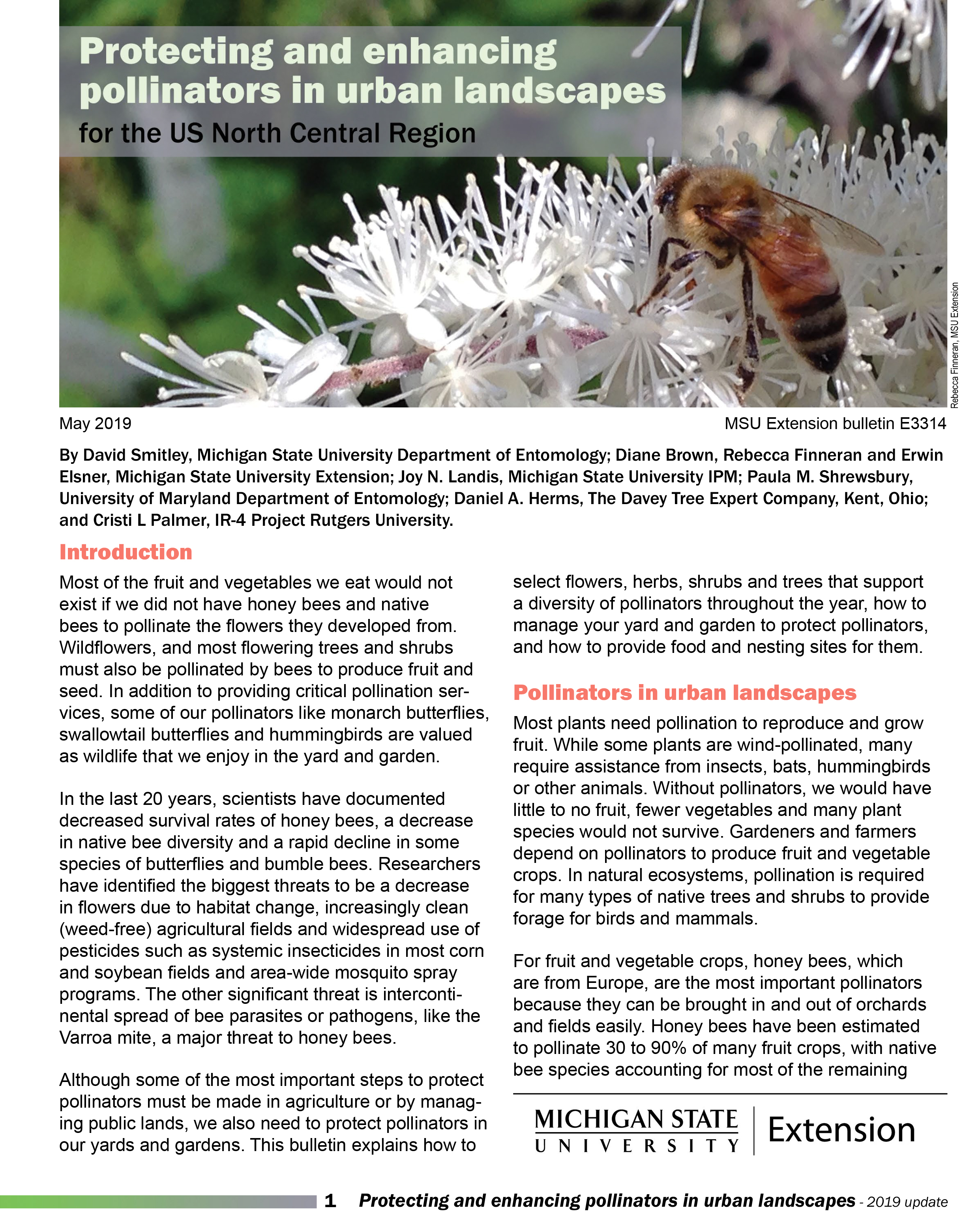How to protect pollinators in urban landscapes and gardens
A new 2019 update is now available for the most complete guide to protecting pollinators while gardening, growing flowers or managing trees, shrubs or turfgrass in urban areas.

Many people are concerned about declines in the number of bees and butterflies, especially honey bees and monarchs. To help gardeners and others in urban settings identify how they can protect and increase populations of pollinators, I worked with a team of ornamental horticulture experts, plant pathologists and entomologists to update a guide full of resources and recommendations. An updated version of “Protecting and enhancing pollinators in urban landscapes for the US North Central Region” is available online for viewing and in PDF format for free downloading.
This online publication includes:
- Factors that threaten pollinator health.
- Detailed recommendations for selecting annuals, perennials, shrubs and trees that support pollinators including butterflies.
- Unique to this publication, best management practices for managing devastating exotic pests, or troublesome outbreaks of native pests, while minimizing impacts on pollinators. These practices include trunk injections and the use of low-impact pesticides.
- A detailed phenological table that tells when the most common trees and shrubs bloom so that sprays can be avoided until they are done blooming.
- A list of 89 references for those that would like to read more on this subject.

New to the updated 2019 version:
- Biological control and highly selective new products that can be used for pest management while protecting pollinators.
- Potential impact of mosquito and nuisance insect sprays on pollinators.
- Impact of fungicides and bactericides on pollinators, and a link to a comprehensive list of fungicides (Appendix 1) and their potential impact on pollinators.
This resource is a 30-page PDF and will answer nearly every question that gardeners, landscapers and tree care professionals may have about protecting pollinators. The plant materials listed and discussed are for the north central region of the United States, but threats to pollinators and management strategies designed to protect pollinators apply anywhere.
The title and complete list of authors is: Protecting and enhancing pollinators in urban landscapes for the US North Central Region (Michigan State University Extension bulletin E3314), by David Smitley, Michigan State University Department of Entomology; Diane Brown and Erwin Elsner, Michigan State University Extension; Joy N. Landis, Michigan State University IPM; Paula M. Shrewsbury, University of Maryland Department of Entomology; Daniel A. Herms, The Davey Tree Expert Company Kent, Ohio, and Cristi L. Palmer, IR-4 Project Rutgers University.
Dr. Smitley’s work is funded in part by MSU’s AgBioResearch.



 Print
Print Email
Email



